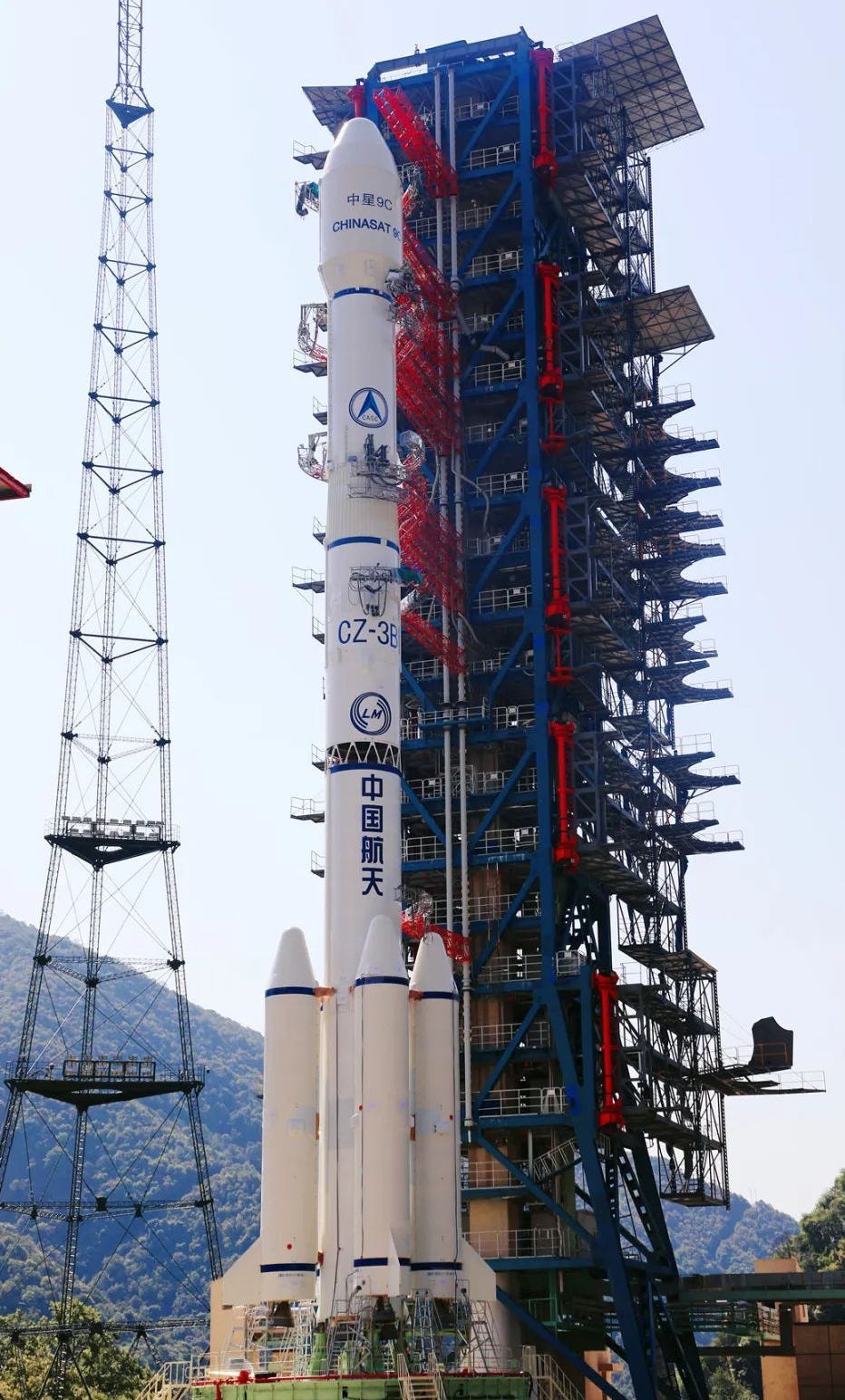ChinaSat-9C Takes off to Replace Aging Satellite [Long March 3B/E]
The tenth mission of the Long March 3A series this year has blasted off.
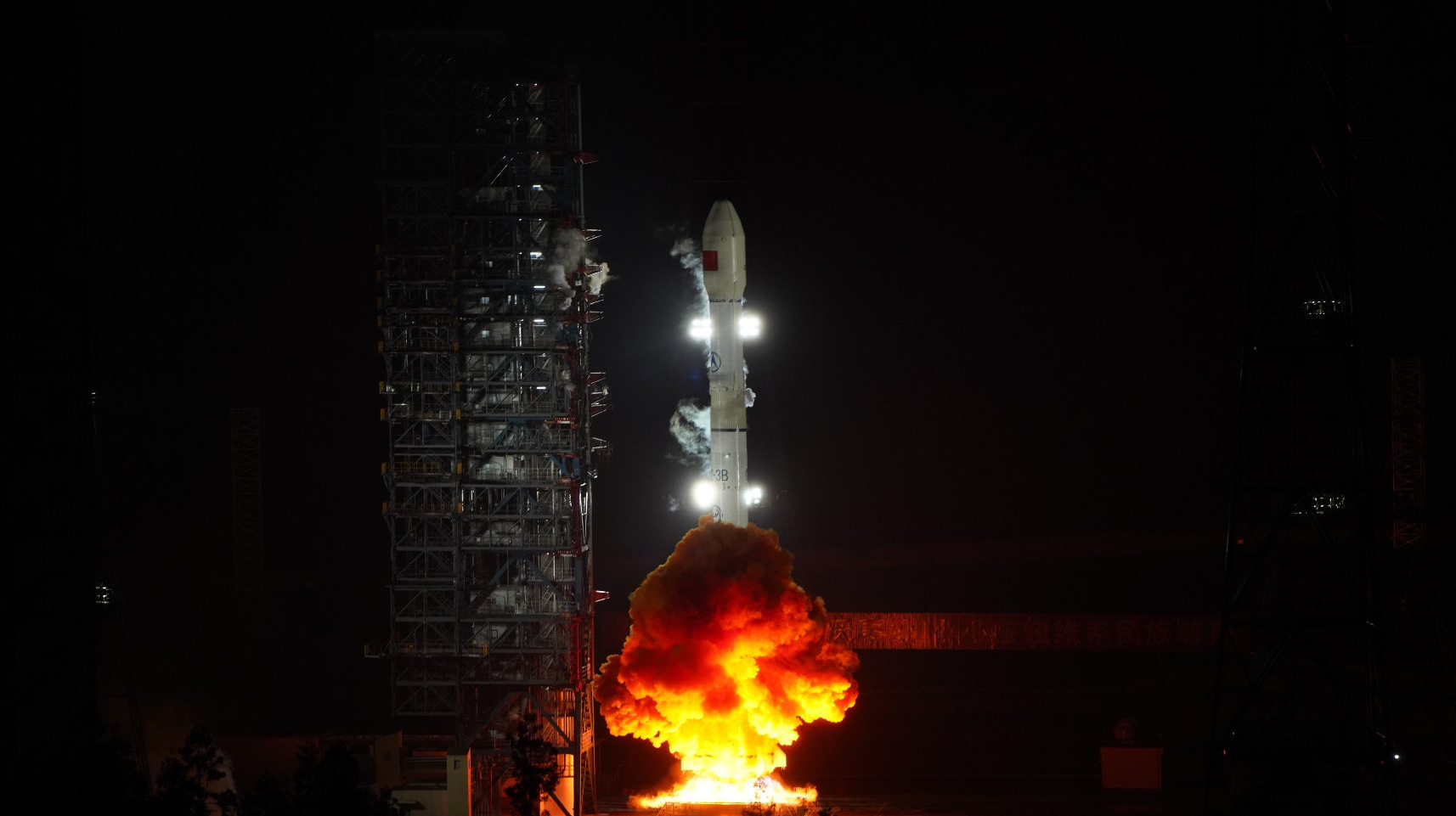
A Long March 3B/E blasted off from Launch Complex 2 at the Xichang Satellite Launch Center at 20:37 pm China Standard Time (12:37 pm Universal Coordinated Time) heading for geostationary orbit with a single satellite.
The sole spacecraft atop of the rocket was ChinaSat-9C (中星9C), intended to last fifteen years, based on the Dongfanghong-4E satellite bus and weighing 5,500 kilograms. ChinaSat-9C was developed by the China Academy of Space Technology and is expected to replace ChinaSat-9, launched in June 2008 and built on Thales Alenia Space’s Spacebus 4000C2, as well as its Ka and Ku-band radio, television, and communication services.
Once ChinaSat-9C is commissioned in orbit following a series of tests, it will broaden regional coverage over China and nearby nations as well as parts of the western Pacific. For several weeks, ChinaSat-9 and its replacement will work in tandem to provide continuous services while the old satellite’s services move over.
ChinaSat-9C is the third ChinaSat spacecraft launched this year, following ChinaSat-10R in February and ChinaSat-3B in May. The launch of new ChinaSat spacecraft is part of a modernization effort that has seen ChinaSat-9B replace ChinaSat-9A in 2021, ChinaSat-6D succeed ChinaSat-6A in 2022, and ChinaSat-6E take over from ChinaSat-6B in 2023.
Nine Long March 3B/E’s have flown this year with today’s mission, along with a single Long March 3C/E, all successfully. Toward the end of last year, the China Academy of Launch Vehicle Technology boasted that they were aiming to launch the Long March 3B/E over a dozen times as part of a period of high-frequency launches. With the current launch rate, almost twenty launch missions with the rocket could occur before the end of 2025, by far the vehicle’s busiest year.
To keep up production with the launch rate, Capital Aerospace Machinery Co Ltd (首都航天机械有限公司) is actively working on multiple Long March 3A series vehicles (consisting of the Long March 3A, 3B, 3C) in parallel to ensure at least one vehicle is produced per month. Following today’s launch, the China Aerospace Science and Technology Corporation noted that it plans for its subsidiaries to double production and launch rate over the coming months.
Both increasing the launch cadence and production of Long March 3B/E vehicles is said to be thanks to optimizations in the design, schedule, and personnel assignments.
Today’s mission was the 110th launch of a Long March 3B vehicle, and the 582nd launch of the Long March launch vehicle series. This was also the 36th launch from China in 2025.
Liftoff video via Cosmic Penguin on Bluesky, as well as 中国航天科技集团 and 卡尔达瓦里希 on Weibo.
Check out the previous Long March 3B/E launch
China's Tianwen-2 Asteroid Sample Return Mission Blasts Off! [Long March 3B/E Y110]
Roaring from Launch Complex 2 at the Xichang Satellite Launch Center on May 29th at 01:31 am China Standard Time (May 28th at 17:31 pm Universal Coordinated Time) was a Long March 3B/E flying away from …
What is the Long March 3B/E?
This section is for those less familiar with China's Long March series of launch vehicles.
The Long March 3B is an older-generation geostationary orbit workhorse of the China Academy of Launch Vehicle Technology. The first two stages and four boosters of the rocket burn Dinitrogen Tetroxide and Unsymmetrical Dimethylhydrazine, with liquid hydrogen and liquid oxygen in the third-stage.
Over the rocket's almost twenty-eight-year launch history, two versions of the vehicle have flown, the 3B and 3B/E. Since 2012, only the 3B/E variant has flown due to its increased payload capacity. The payload capacity of the launch vehicle is currently as follows:
11,500 kilograms to low Earth orbit
7,100 kilograms to a sun-synchronous orbit
5,500 kilograms into a geostationary transfer orbit
2,000 kilograms into geostationary orbit
The first-stage is powered by four YF-21C engines that burn Dinitrogen Tetroxide and Unsymmetrical Dimethylhydrazine to generate 302 tons of thrust, while the boosters are powered by one YF-25 engine burning the same fuel to generate 72 tons of thrust each. Combined the four boosters and first stage generate a thrust of 590 tons. The second stage is powered by one YF-22E and four YF-23F vernier engines that also burn Dinitrogen Tetroxide and Unsymmetrical Dimethylhydrazine to generate 81 tons of thrust. The third-stage is powered by two YF-75 engines that burn liquid hydrogen and liquid oxygen to generate 17 tons of thrust.
On the launch pad, the Long March 3B/E is 56.3 meters tall and weighs 458,970 kilograms when fully fuelled. The first and second-stage have a diameter of 3.35 meters, while the third-stage has a diameter of 3 meters, along with the four boosters diameter of 2.25 meters, and the fairing has a diameter of 4.2 meters.
So far, every Long March 3B launch has occurred from the Xichang Satellite Launch Center, in the south of Sichuan province.
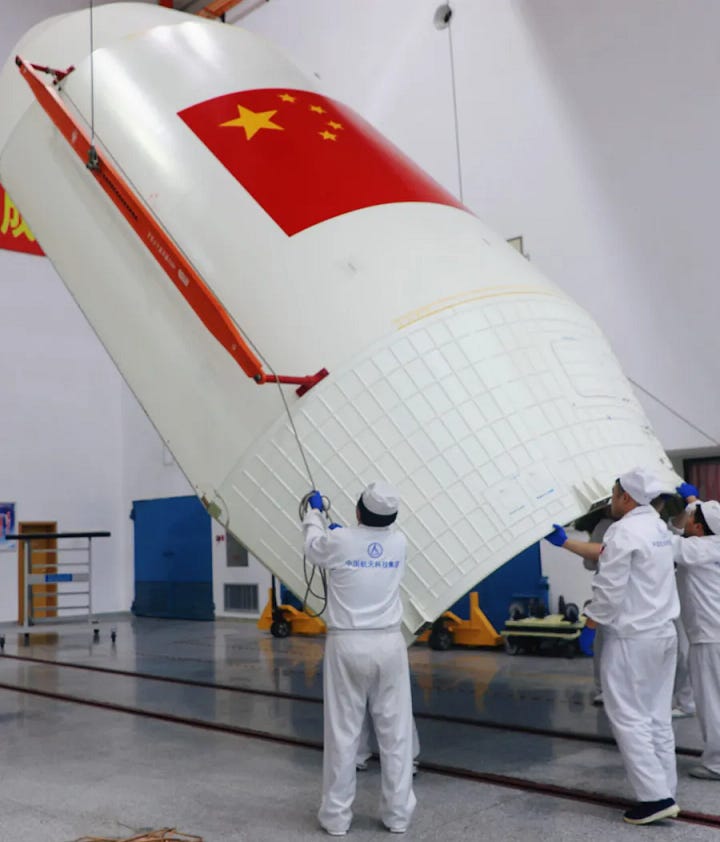
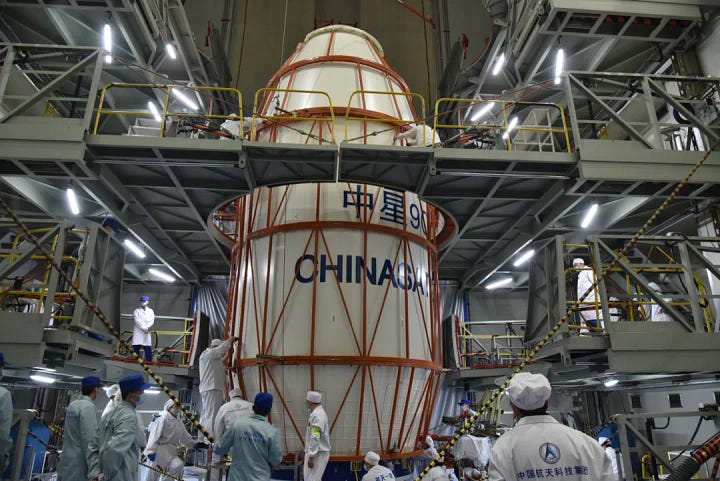
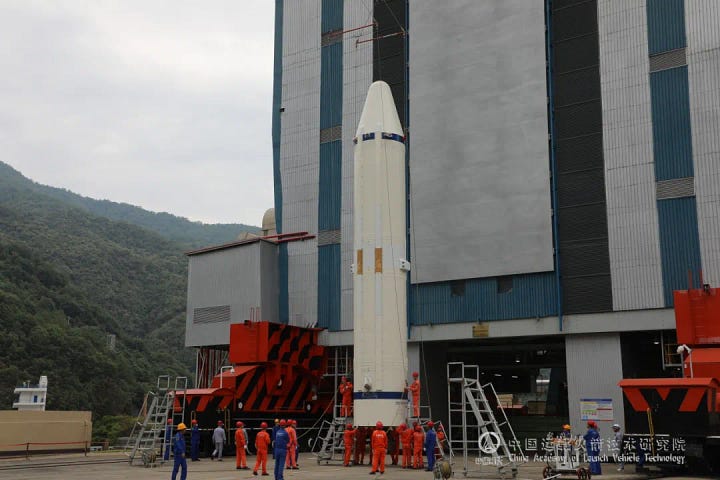
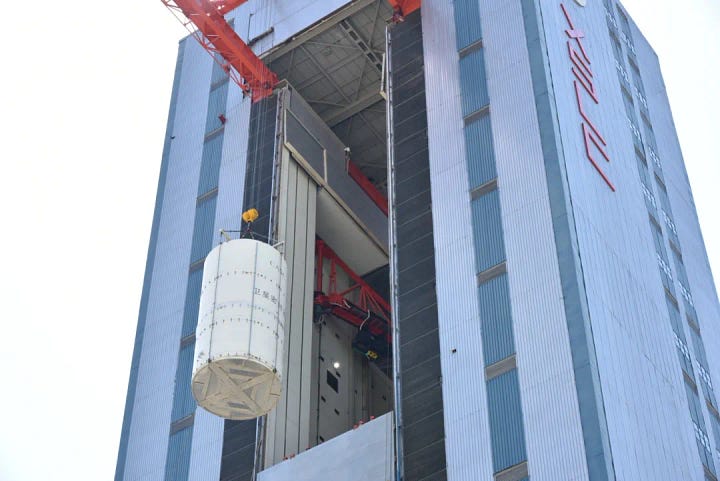




![China's Tianwen-2 Asteroid Sample Return Mission Blasts Off! [Long March 3B/E Y110]](https://substackcdn.com/image/fetch/$s_!1VgM!,w_1300,h_650,c_fill,f_auto,q_auto:good,fl_progressive:steep,g_auto/https%3A%2F%2Fsubstack-post-media.s3.amazonaws.com%2Fpublic%2Fimages%2F5f29f5f0-87d6-4db6-ab90-5301317995c3_7498x4680.jpeg)
